Make your Thanksgiving turkey more flavorful than ever with our top turkey tips. In no time, youll know how to season a turkey that guests will crave.
With Thanksgiving just around the corner, you’re sure to have your menu planned from the best Thanksgiving sides to perfect pumpkin pies. And of course, you’ve got the traditional turkey lined up.
Whether you’re serving up a small gathering of close friends and family, or throwing a Friendsgiving get-together, you’ll want to get (and serve) the perfect turkey for everyone at the dinner table. Make sure you know how much turkey to serve per person, so you grab the right size bird for your holiday dinner.
But before you pop your perfectly chosen turkey into the oven, don’t forget to season it well. The right Thanksgiving turkey recipes paired with pitch-perfect seasoning can turn your turkey from a basic bird to a fantastic fowl. Follow these tips and tricks on seasoning your turkey for a juicy and flavorful meal.
The star of many holiday meals, a perfectly roasted turkey is a sight to behold. With crisp, golden skin enveloping tender, juicy meat, it can easily be the crown jewel of your Thanksgiving or Christmas dinner when done right But achieving turkey perfection lies not only in masterful roasting, but also in proper seasoning Applying flavor under the skin can take your turkey from dry disappointment to delicious success.
Seasoning under the skin infuses the meat with spices, herbs, and other flavors as it cooks, ensuring every bite is bursting with taste. The skin also helps seal in the seasoning, creating a flavorful boundary between the meat and the dry oven air. Follow these simple methods for getting seasonings under the skin to maximize flavor and moisture in your holiday bird.
Why Season Under the Skin
There are two main benefits to seasoning under the skin rather than just on the surface
-
Deeper flavor infusion: With seasonings pressed right up against the meat, flavors permeate into it as it cooks. Just seasoning the skin alone cannot deeply flavor the meat below.
-
More moisture: The skin forms a protective barrier, keeping the meat below moist and preventing it from drying out in the oven. Patches of seasoning on the skin surface can disrupt this protective layer.
So take the extra couple minutes to get seasonings under the skin for turkey that’s bursting with flavor in every bite, not just the exterior, with meat that’s tender and juicy throughout.
How to Loosen the Skin
Before you can slide seasonings under the skin, you first need to gently loosen it from the breast meat below. Here’s how:
-
Use your fingers: Starting at the cavity opening, gently work your fingers between the skin and breast meat, loosening the skin as you move towards the neck. Repeat for the other side.
-
Be gentle: Take care not to tear the delicate skin as you separate it from the meat. Tears will allow moisture to escape during roasting.
-
Loosen both sides: Make sure to gently free the skin over both breasts and down the thighs as well. The more area you season under the skin, the more flavorful your roasted turkey will be.
-
Create pockets: Separate the skin enough to make small pockets for seasonings to rest in and spread evenly later.
What to Put Under the Turkey Skin
Once the skin is freed up, you can rub, spread, or otherwise stuff it with your choice of flavor-boosting ingredients. Here are some excellent options:
-
Butter: Softened, herbed butter is a classic turkey seasoning. It bastes the meat from the inside as the turkey roasts.
-
Fresh herbs: Finely chop herbs like sage, thyme, rosemary, oregano, marjoram, or others and combine with butter or oil to spread under the skin.
-
Spice rubs: Make a wet paste from dry spices like cumin, paprika, coriander, and chili powder blended with oil or butter to use under the skin.
-
Citrus zest: Zest from lemons, limes, oranges, or other citrus adds bright flavor under the skin. Mix with herbs, spices, and butter or oil.
-
Aromatics: Diced shallots, onions, garlic, ginger, or lemongrass add flavor when stuffed under the skin.
-
Brines or marinades: Rubbing wet brines or marinades under the skin can further boost flavor.
How to Get Seasonings Under the Skin
With your seasonings ready and the skin loosened up, getting them underneath is a cinch. Here are two easy methods:
1. Spread with butter or oil
-
Soften the butter or oil: Solid butter or thick oil won’t spread easily, so make sure your seasoning medium is soft and spreadable.
-
Add seasonings: Mix chopped herbs, spices, citrus zest, aromatics, or other flavorings into the softened butter or oil.
-
Spread it on: Use your hands or a spoon to spread the seasoned butter or oil evenly under the skin onto the meat, covering as much area as possible.
2. Stuff pockets of seasoning
-
Make small portions: Divide your chopped herbs, spice rubs, or other solid seasonings into small clumps about 1 tablespoon each.
-
Fill the pockets: Carefully stuff the prepped pockets of loosened skin with the clumps of seasoning.
-
Distribute evenly: Space and spread the pockets of seasoning so flavor is evenly distributed under the skin.
-
Pat the skin: Lightly pat the skin to spread and adhere the seasoning onto the meat beneath.
Once your turkey is perfectly prepped with seasoning under the skin, it’s ready for a flavorful roasting. As the turkey cooks, delicious notes of garlic, citrus, herbs, and spices will permeate the meat, while the skin seals in moisture and flavor. Follow proper roasting guidelines for the ideal texture, and be prepared for the juiciest, most flavor-packed holiday turkey you’ve ever enjoyed.
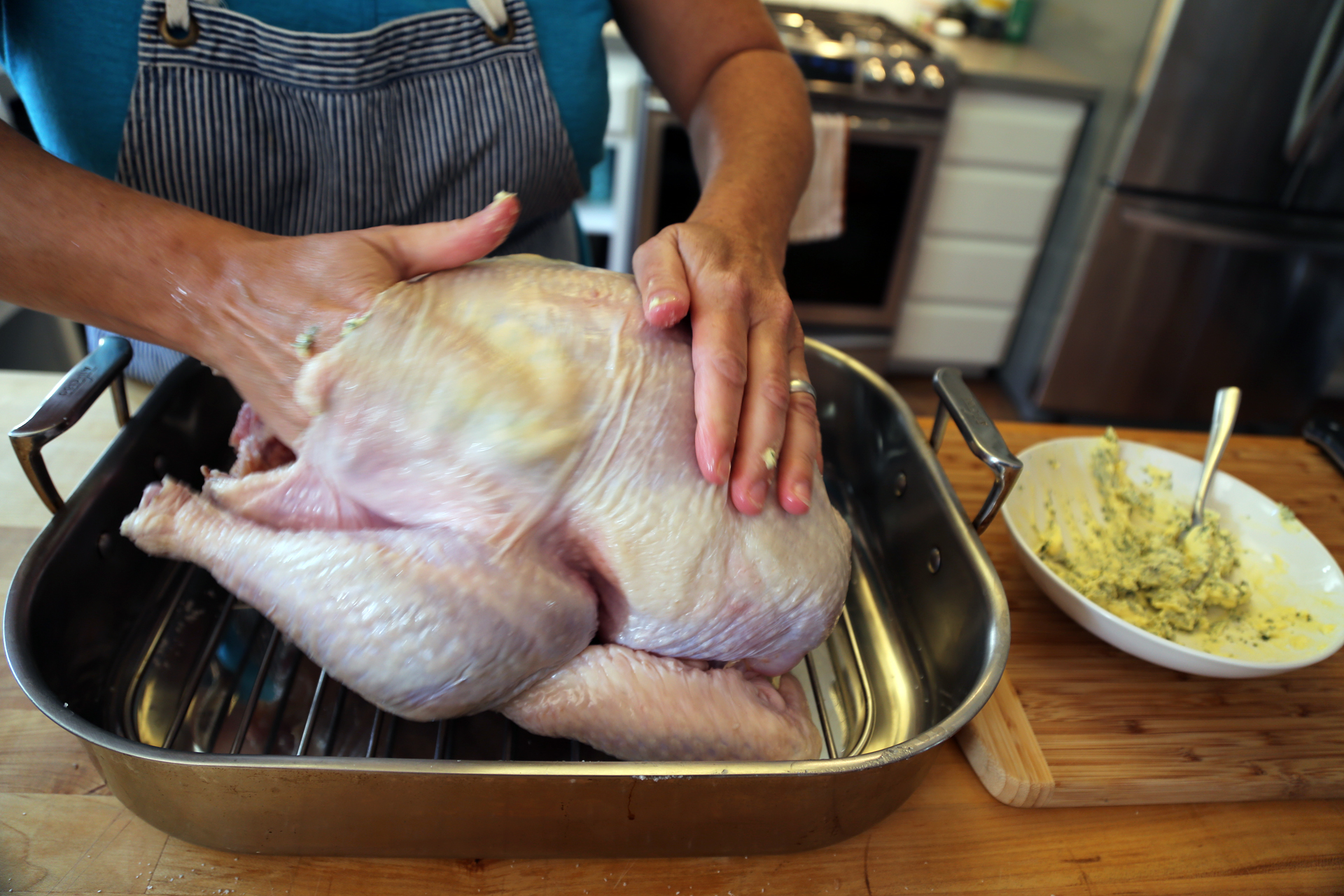
Season Under the Skin
It can be tempting to sprinkle your seasonings right on top of the frozen turkey (obviously after defrosting it) as you’d do with any other protein. To get the most flavor, however, it’s best to season under the skin. This is our greatest tip for teaching anyone how to season a turkey.
This puts those spices in direct contact with the meat for maximum impact. Plus, if you don’t like the skin you can peel it off after cooking without losing all the herby goodness.
When it comes to seasoning, salt and pepper are the right place to start. But you can expand upon these basics by using fall herbs like rosemary, thyme, and sage, which are natural accompaniments for turkey. You can branch out further with your favorite seasoning blends.
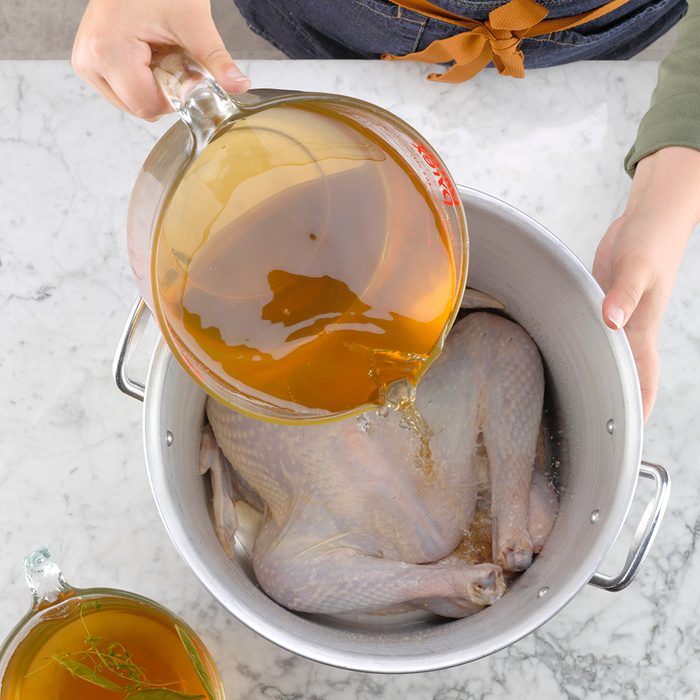
To add extra flavor and tenderness to your Thanksgiving turkey, try a basic brine or you could even go for a dry brine. Soaking the turkey in this saltwater mixture helps to tenderize the meat while adding flavor and moisture throughout the entire turkey. The simplest of brines is plain ol’ saltwater, but we love to add herbs and spices to give the turkey as much flavor as possible. These turkey brine recipes will give you the inspiration you need.
But take heed, brining is a plan-ahead trick. Your bird should sit in the brine for at least four hours (though overnight is best, so start a full day ahead). And before you brine, make sure you have a food-safe container large enough to accommodate your bird.
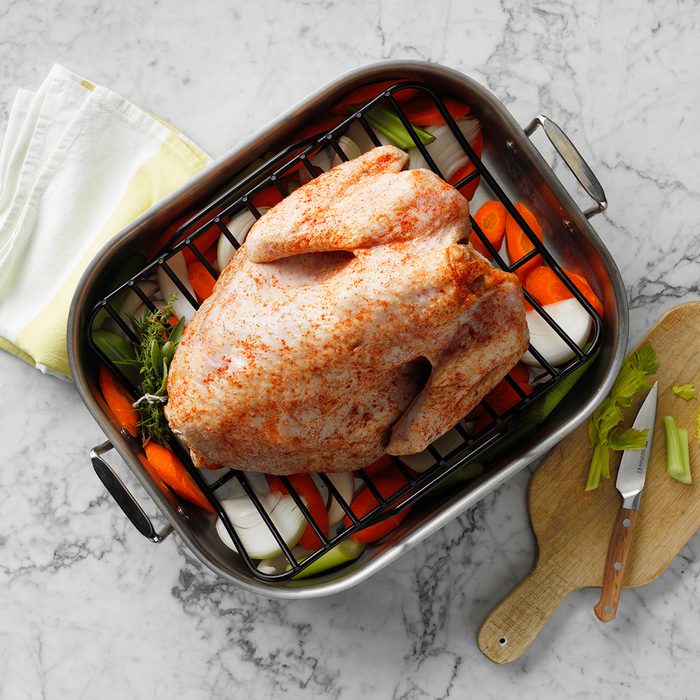
Season Inside the Turkey
Don’t limit your seasoning to just the exterior of your holiday main. Be sure to get your seasoning blend into all the nooks and crannies of the turkey—even on the inside. This will give your roast the most flavor possible.
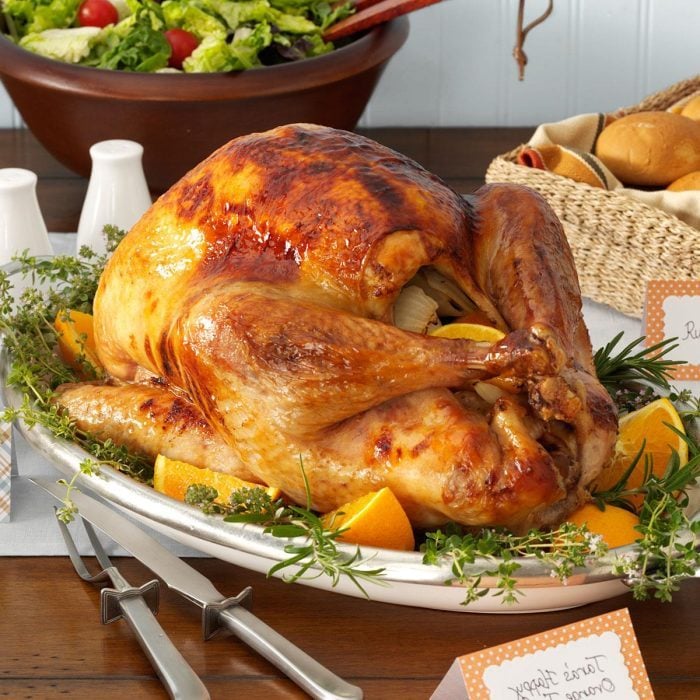
Instead of filling your bird with stuffing, fill it with aromatics. (News flash: Cooking stuffing inside a turkey can be dangerous.) The basics, like onion, garlic, thyme, rosemary, and sage, help lend that traditional Thanksgiving flavor.
Take your aromatics up a notch by adding halved lemons or oranges. The citrus will add a nice brightness to the turkey and keep it perfectly moist.
Here’s a full list of all the ways you can stuff your holiday turkey—that don’t include stuffing.
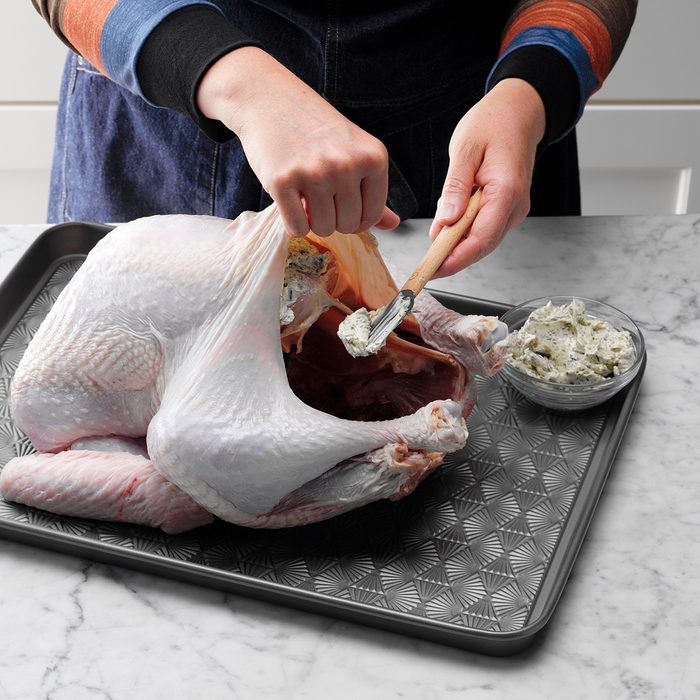
How to Season Your Turkey | Weber Grills
FAQ
Do you put butter on or under turkey skin?
How to season your turkey before cooking?
Does seasoning penetrate turkey skin?
How do you season a Turkey under the skin?
To season a turkey under the skin, you’ll need the following ingredients: 1. Rinse the turkey inside and out with cold water. 2. Pat the turkey dry with paper towels. 3. Using your fingers, loosen the skin from the meat all over the turkey. 4. Sprinkle the turkey with salt, pepper, garlic powder, onion powder, and dried herbs. 5.
Can you put butter under Turkey skin overnight?
In fact, many people believe that allowing the butter to sit under the skin overnight helps it to absorb into the meat and add even more flavor! Of course, you can use standard salted or unsalted butter for your turkey. Additionally, you can make a delicious butter compound for some extra flavor!
How do you season a fried turkey?
1. In a large bowl, combine the salt, brown sugar, herbs, olive oil, garlic powder, onion powder, black pepper, and cayenne pepper. 2. Rub the turkey inside and out with the seasoning mixture. 3. Place the turkey in a large resealable bag or container. 4. Refrigerate the turkey for at least 8 hours or overnight. 5.
How do you cook a turkey breast seasoned under the skin?
Here are some tips for cooking a turkey that has been seasoned under the skin: * If you are roasting the turkey in the oven, preheat your oven to 350 degrees Fahrenheit. Place the turkey breast-side up on a roasting rack in a roasting pan.
